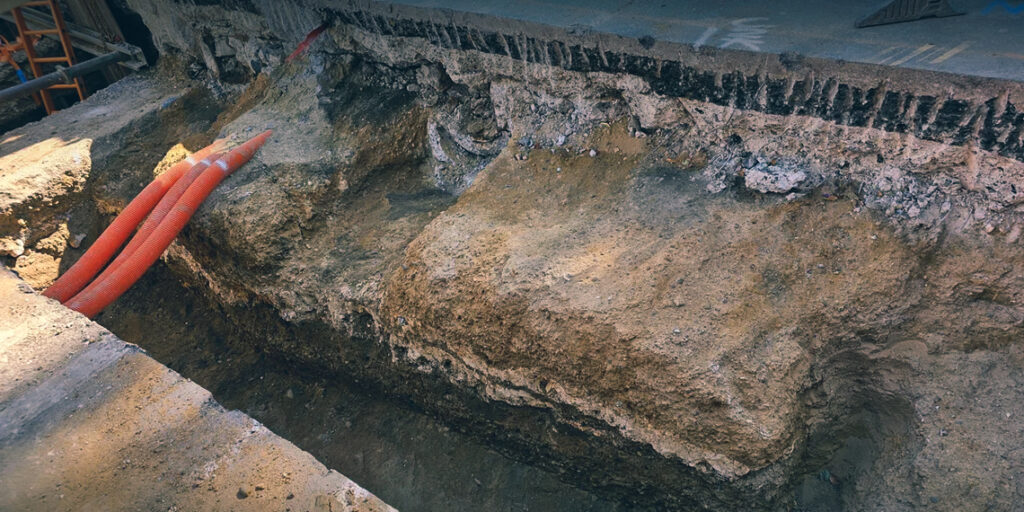A 2,000-year-old Roman road has been uncovered beneath Old Kent Road in London during excavations for a low-carbon heating project.
This remarkable find offers fresh insights into Roman Britain’s infrastructure and construction techniques.
The discovery highlights the ancient Wating Street, a significant Roman road built following the Roman invasion of Britain in AD 43.
While previous evidence of the road’s precise route was limited, archaeologists have now confirmed its path under modern-day Old Kent Road. The Museum of London Archaeology (MOLA) conducted the dig, working with Veolia and RPS (A Tetra Tech Company).
This section of Roman road in London spans 5.8 meters (19 feet) wide and 1.4 meters (5 feet) high. Its durable construction features a gravel foundation, two layers of chalk, and a final compacted sand-and-gravel surface.
Despite centuries of urban development—including sewers, power lines, and tramways—this section of the road has remained remarkably intact.
The discovery redraws the Roman road map for Southwark and showcases the enduring legacy of Roman engineering.
Archaeologists have praised its exceptional preservation and described it as a vital clue to Roman Britain’s construction practices.
Gillian King, Director of Archaeology at RPS, emphasized that the road’s discovery enriches archaeological research in London’s Roman history.
A commemorative sign will be installed near Old Kent Road Bridge to mark the site, allowing residents and visitors to appreciate the historical significance of this extraordinary find.
This discovery not only highlights the ingenuity of Roman engineering but also demonstrates the importance of modern archaeological work in preserving London’s ancient history.


